Photinia serratifolia
Chinese Photinia
A versatile tree or perhaps more commonly grown as a large, spreading shrub. Prune to maintain desired size and form. Best with some protection from the sun in hot summer regions. New growth is light green to coppery bronze, then turns dark to medium green. Showy red berries follow spring flowers and adorn the plant for a long time. Susceptible to mildew along the coast. Canopy coverage (tree form): 707 square feet.
[Read More]Pinus bungeana
Lacebark Pine
Lacebark Pine grows as a rounded to pyramidal tree, often with multiple trunks. It makes an exceptional specimen pine, due to its interesting bark that flakes off in patches to reveal interesting puzzle pieces of gray, green and cream colors. Needles remain on the tree for several years. Small cones are yellowish brown. Canopy coverage: 707 square feet.
[Read More]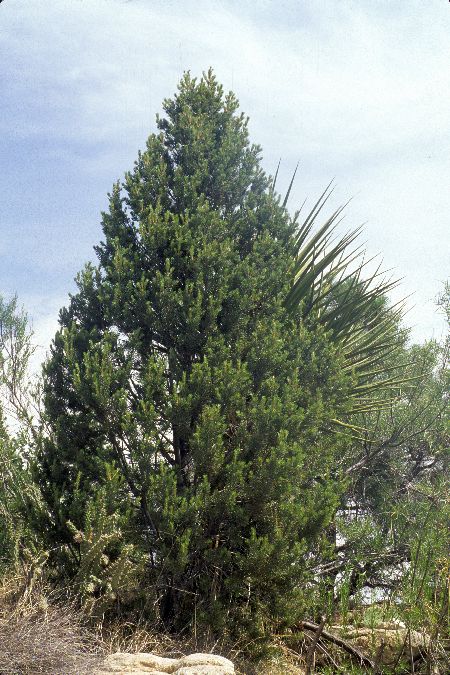
Pinus edulis
Piñon Pine
Piñon Pine is a small stature tree but possesses much character. Slow growing, it takes several years before trees produce cones and edible seeds. It looks right at home in a rock or boulder garden. Canopy coverage: 177 square feet.
[Read More]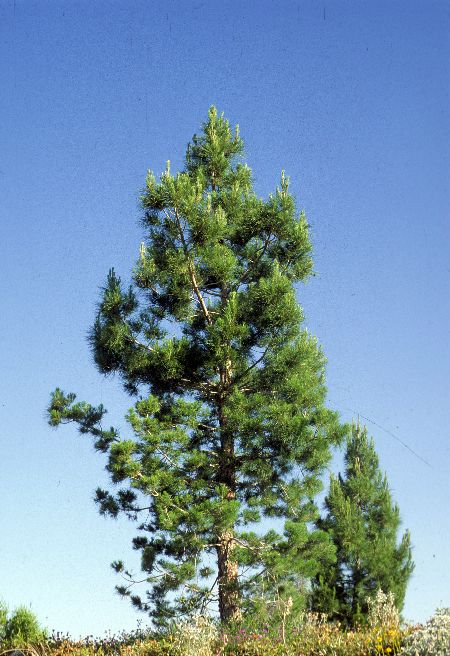
Pinus eldarica
Afghan Pine, Mondell Pine
Afghan pine is a tree with a symmetrical, pyramidal form. Brown cones 4 to 6 inches long add interest in summer. Effective and commonly used as a fast-growing windbreak. Canopy coverage: 491 square feet.
[Read More]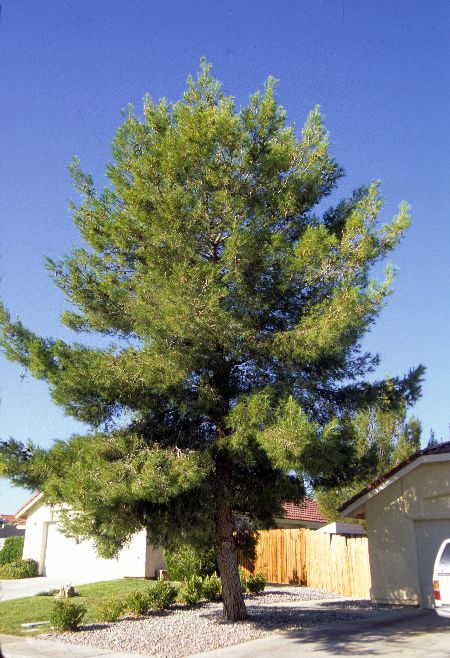
Pinus halepensis
Aleppo Pine
You can often Identify a mature Aleppo Pine due to its rounded, irregular form. Makes a nice large specimen tree. Canopy coverage: 491 square feet.
[Read More]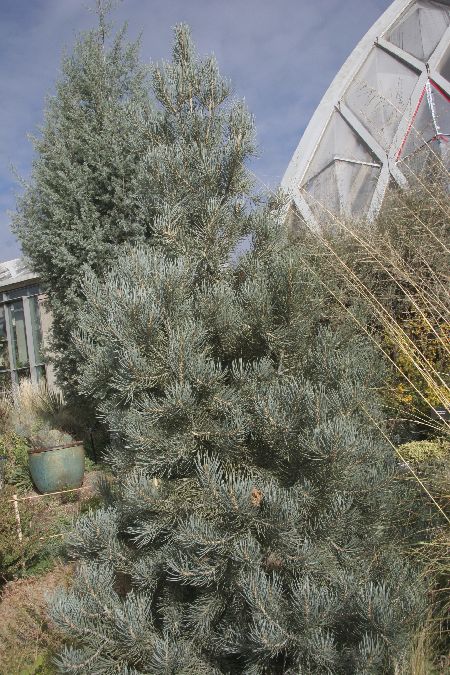
Pinus monophylla
Singleleaf Piñon Pine
Similar to Piñon Pine, but it takes on a little more rugged appearance at maturity. Needles are held one to a bundle; Piñon Pine are held two to a bundle. Canopy coverage: 177 square feet.
[Read More]Pinus nigra
Austrian Pine
The overall appearance of Austrian Pine is similar to the popular Ponderosa Pine, with dense foliage and a pyramidal form that becomes more broad and flat-topped with age. A versatile tree, use it as a specimen, windbreak or screen. Best suited to irrigated landscapes. Accepts sandy to clay soils; prefers well-drained soils. Canopy coverage: 707 square feet.
[Read More]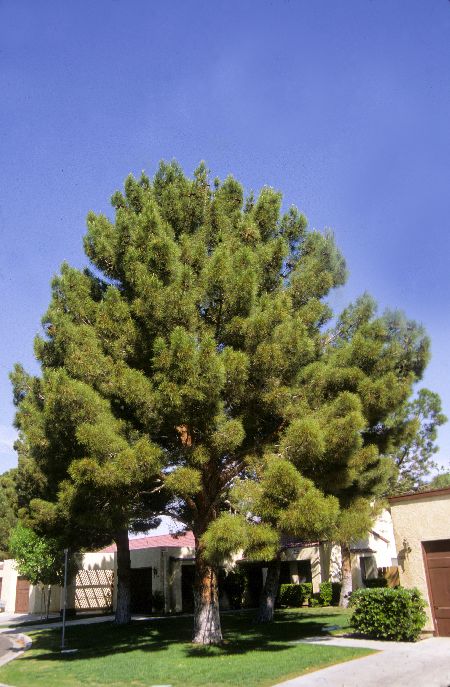
Pinus pinea
Italian Stone Pine
Stone Pine develops a flat-topped crown with age. Brown cones are ornamental in late summer. Edible nuts attract wildlife. Canopy coverage: 1,257 square feet.
[Read More]Pinus sylvestris
Scotch Pine
Young trees of Scotch Pine are conical then become open, round-topped and picturesque with age. Many improved selections are available. 'Fastigiata' produces a narrow, columnar form. 'Nana' is a dwarf form, to 8 feet high and as wide. (Shown, with distinctive orange-red bark.) Canopy coverage: 707 square feet.
[Read More]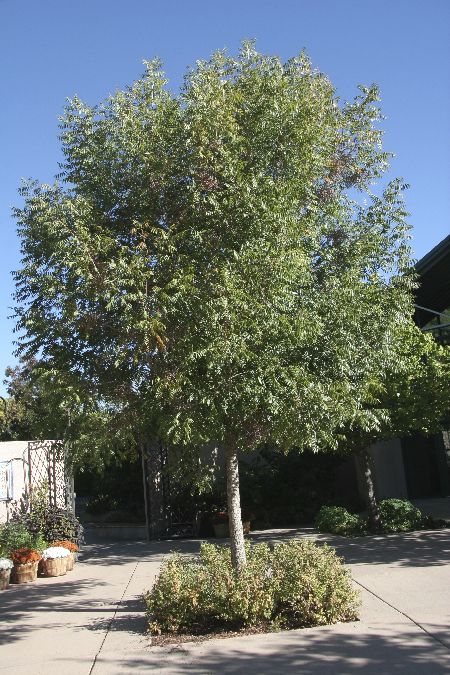
Pistacia chinensis
Chinese Pistache
Chinese Pistache is a great choice as a shade tree with the bonus of striking fall color in shades of gold and red. Canopy coverage: 962 square feet.
[Read More]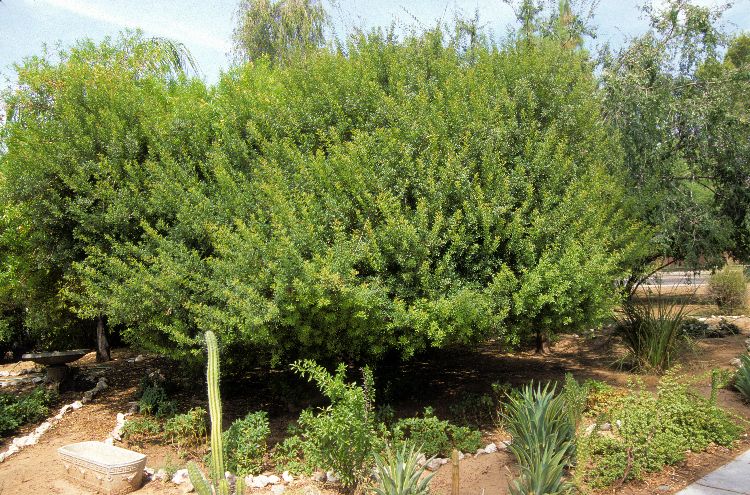
Pistacia lentiscus
Mastic Tree
Well adapted as a large shrub or screen with its wide spreading form, or train into a small tree. Canopy coverage: 314 square feet.
[Read More]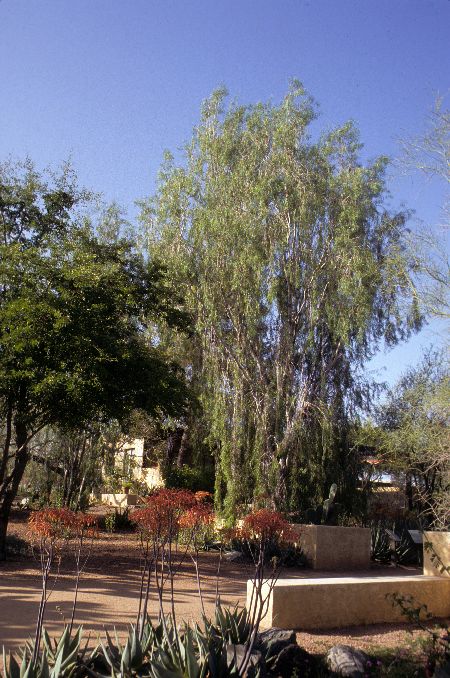
Pittosporum phillyraeoides
Willow Pittosporum
This interesting Australian native provides a unique vertical and weeping element in the landscape. The ribbonlike leaves grow up to 4 inches long. Canopy coverage: 177 square feet.
[Read More]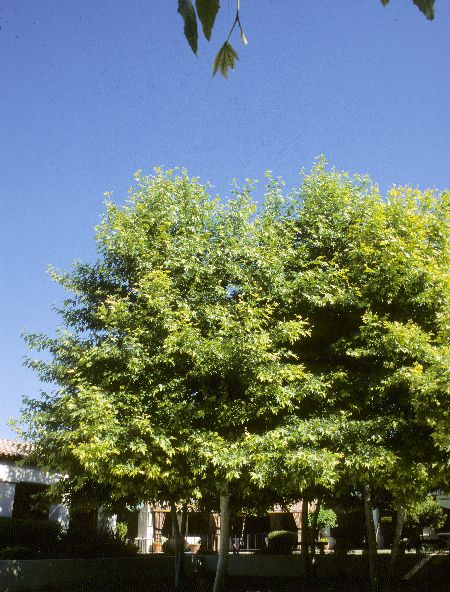
Platanus racemosa
Sycamore
A large tree best suited for naturalistic landscapes. Also consider Arizona Sycamore, which has a smaller mature size to 40 feet high. Canopy coverage: 1,963 square feet.
[Read More]Platycladus orientalis
Oriental Arborvitae
This is a popular evergreen grown as a tree or shrub. The Oriental Arborvitae species produces an open, pyramidal habit. Soft, scalelike leaves present in flat, fanlike sections. 'Aurea Nana' features yellow-gold foliage, growing as a globe-shaped shrub to 5 feet high or more. Accepts sandy to heavy clay soils, as long as it is well drained. Canopy coverage: 177 square feet.
[Read More]Podocarpus henkelii
Long-leaved Yellowwood
Vertical form of Long-leaved Yellowwood makes it an excellent choice as a screen or specimen. Ribbonlike leaves up to 7 inches long curl and droop in dramatic fashion. Accepts pruning and clipping to suit a space or landscape need. Canopy coverage: 491 square feet.
[Read More]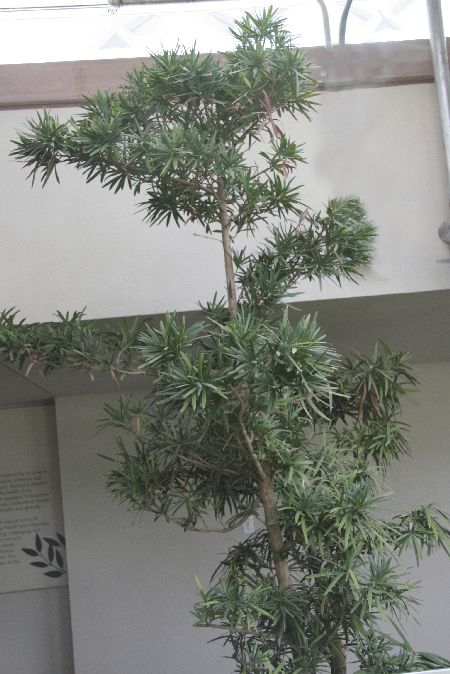
Podocarpus macrophyllus
Yew Pine, Buddhist Pine
Yew Pine is an excellent choice for narrow locations, such as against a wall or in an entryway. Accepts training as an espalier. Best with some protection from the sun in hot summer regions. Canopy coverage: 79 square feet.
[Read More]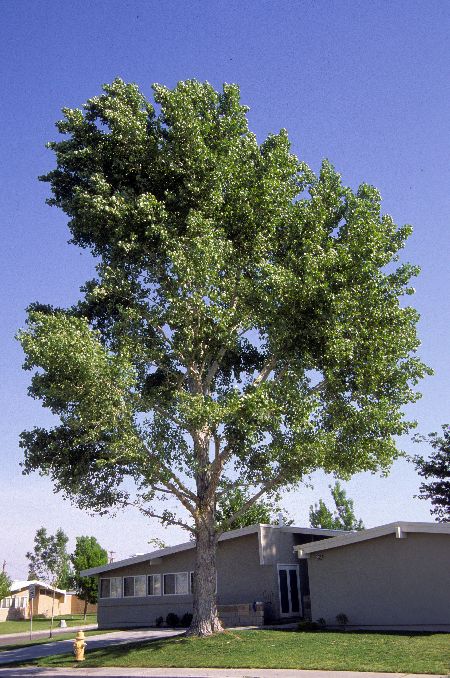
Populus fremontii
Fremont Cottonwood, Poplar
Bright yellow fall color is an attractive feature. Female trees produce the cottony seeds that drift in the wind. Male trees are available that are seedless (no cotton). Canopy coverage: 707 square feet.
[Read More]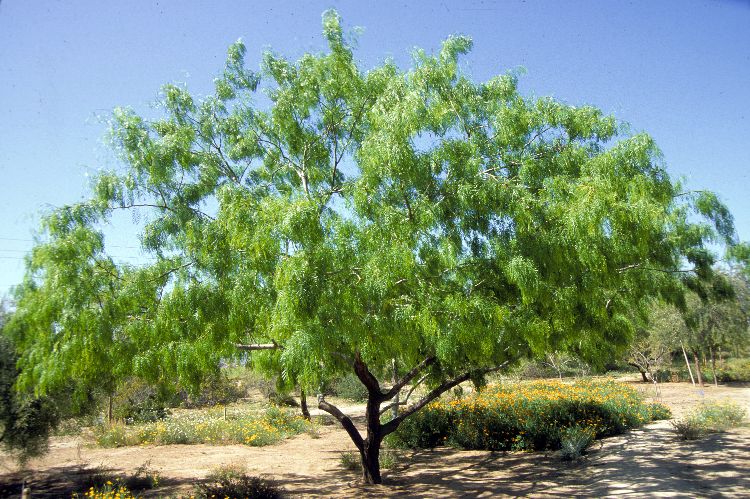
Prosopis glandulosa
Texas Honey Mesquite
This is a sprawling tree with character that takes time to develop. Its serious thorns require caution when pruning or grooming trees. 'Maverick' is a thornless selection. A similar tree is the Western Honey Mesquite. Its foliage is dark green compared to the bright green of Texas Honey. Canopy coverage: 707 square feet.
[Read More]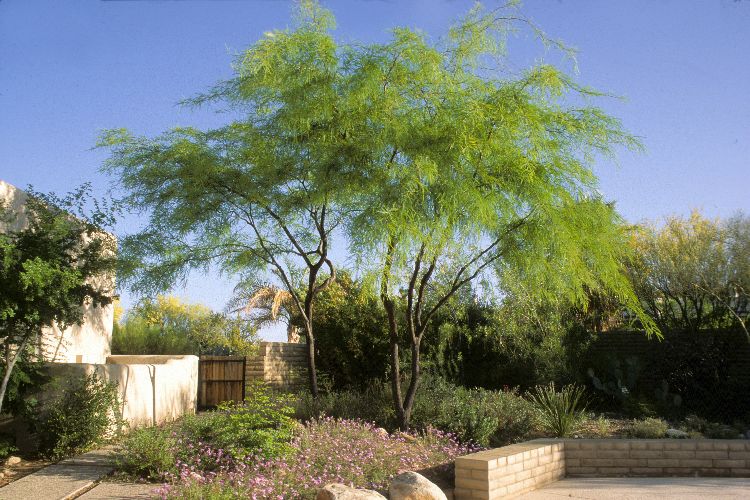
Prosopis hybrid
South American Hybrid Mesquite
Mesquites are prime, fast-growing trees for shade and screening. Important to water deeply at tree's dripline (well away from trunk) to encourage deep roots. In windy regions, blowover can be a problem. Canopy coverage:707 square feet.
[Read More]Prosopis pubescens
Screwbean Mesquite
Screwbean Mesquite can be grown as a shrub or trained into a small tree. Thorny—prune with caution. Very low water use but improved appearance with additional water. Canopy coverage: 707 square feet.
[Read More]Prosopis velutina
Velvet Mesquite
This Southwest native mesquite represents the character of the desert. 'Phoenix' is a selection that features the rootstock of the native tree grafted to a South American hybrid mesquite. Canopy coverage: 707 square feet.
[Read More]